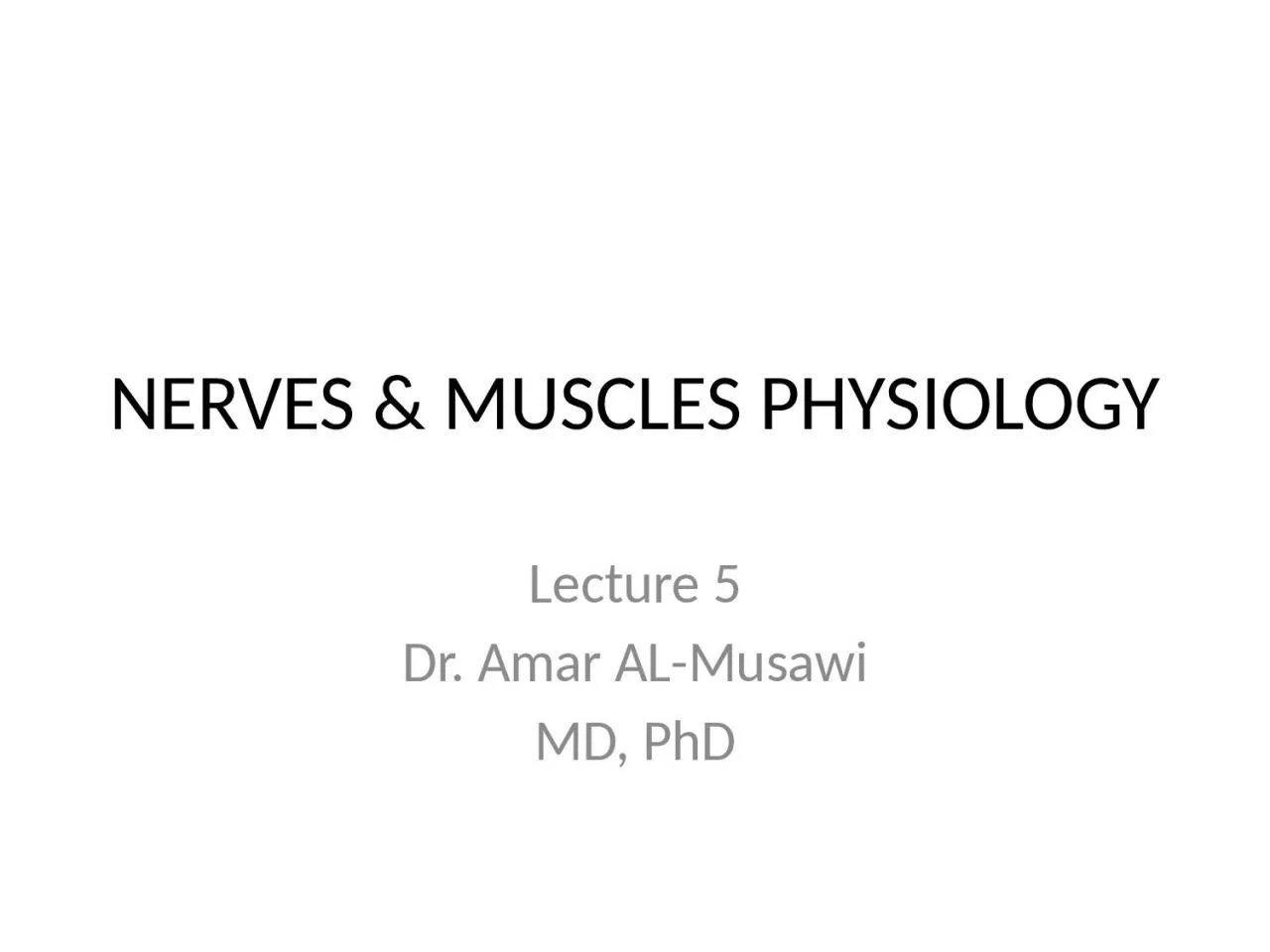

Lecture 5 Dr Amar AL M usawi MD PhD Synaptic plasticity It is the changes in the synaptic functions as a result of the history of discharging at a synapse ie synaptic conduction can be strengthened or weakened on the basic of past experience ID: 920259
Download Presentation The PPT/PDF document "NERVES & MUSCLES PHYSIOLOGY" is the property of its rightful owner. Permission is granted to download and print the materials on this web site for personal, non-commercial use only, and to display it on your personal computer provided you do not modify the materials and that you retain all copyright notices contained in the materials. By downloading content from our website, you accept the terms of this agreement.
Slide1
NERVES & MUSCLES PHYSIOLOGY
Lecture
5
Dr. Amar AL-
M
usawi
MD, PhD
Slide2Synaptic plasticity:
It is the changes in the synaptic functions as a result of the history of discharging at a synapse, i.e. synaptic conduction can be strengthened or weakened on the basic of past experience.
1. Short-term post-tetanic potentiation
(
due to
buildup of excess Ca
2+
ions in the presynaptic neuron
)
.
2. Long-term post-tetanic potentiation
(
due to the
buildup of excess Ca
2+
ions in the postsynaptic neuron)
.
3. Postsynaptic habituation
(due to decrease of the presynaptic neurotransmitter release as a result of inactivation of voltage-gated Ca
2+
channels at the terminal button membrane).
Slide3Animation
Slide4Slide5Drugs that affect transmission at the neuromuscular junction:
Drugs that stimulate the muscle fiber by
Ach-like action (agonists)
or
causing excessive release of Ach
Moderate dose
Muscle spasm
Extreme dose F
laccid paralysis
2. Drugs that stimulate the neuromuscular junction by
inactivating
acetylcholinestrase
:
S
pastic paralysis
3. Drugs that
inhibit transmission
at the neuromuscular junction and cause paralysis of the muscles
Inhibit Ach synthesis,
Prevent filling (storage) of the vesicles with acetylcholine,
Inhibit exocytosis of the ACH-containing vesicles
Block vesicular release of Ach
Compete with acetylcholine for the receptor sites of the end-plate membrane
Slide6Properties of skeletal muscles
:
Excitability
.
Contractility
.
Conductivity
.
Tonicity
.
Slide7Slide8Slide9Slide10Slide11Slide12Slide13Animation
Slide14Figure 4.18 B: Myosin and actin filaments.
Slide15